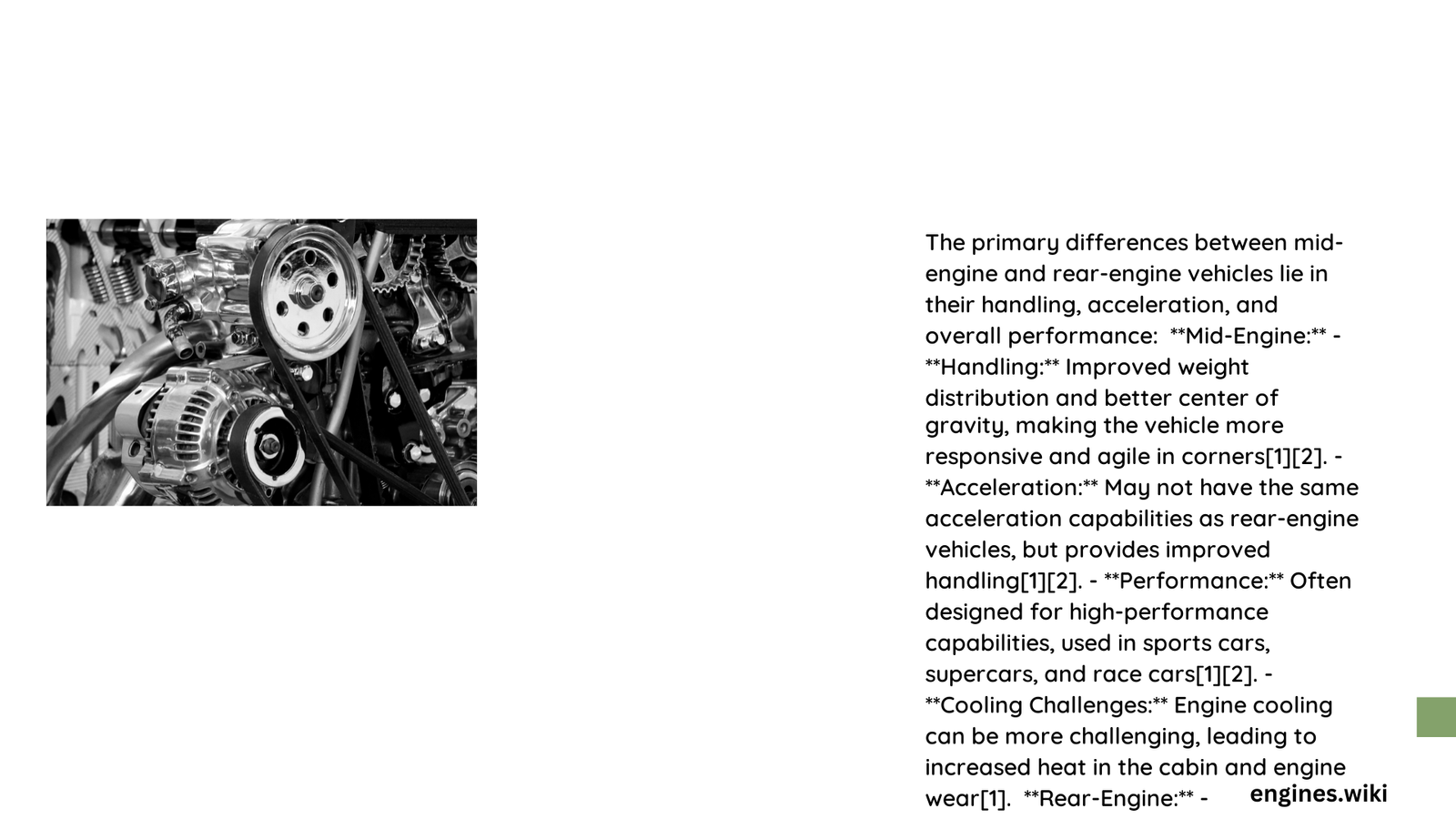Vehicle engine placement dramatically influences performance, handling, and driving dynamics. Mid-engine and rear-engine configurations represent two distinct architectural approaches in automotive design, each offering unique advantages and challenges. While mid-engine vehicles provide balanced weight distribution and superior handling, rear-engine cars deliver distinctive traction and acceleration characteristics, creating fundamentally different driving experiences for automotive enthusiasts.
What Makes Mid-Engine and Rear-Engine Configurations Unique?
How Does Weight Distribution Impact Vehicle Performance?
| Configuration | Weight Distribution | Handling Characteristics |
|---|---|---|
| Mid-Engine | Near 50/50 balance | Highly stable, responsive |
| Rear-Engine | Rear-biased weight | Potential oversteer risk |
Mid-engine vehicles achieve exceptional balance by positioning the powerplant between the driver and rear axle. This strategic placement creates a nearly perfect weight distribution, enhancing:
- Cornering Stability: Reduced body roll
- Agility: Quick directional changes
- Predictable Handling: Minimal unexpected movements
Rear-engine configurations, exemplified by iconic models like the Porsche 911, present a different engineering philosophy. The engine’s placement behind the rear axle creates unique performance characteristics:
- Direct Traction: Weight over drive wheels
- Compact Design: Reduced overall vehicle length
- Potential Handling Challenges: Higher risk of oversteer
What Are the Performance Dynamics of Each Configuration?
Mid-Engine Performance Advantages
- Balanced Weight Distribution
- Nearly equal front and rear weight
- Lower center of gravity
-
Enhanced stability during high-speed maneuvers
-
Improved Cornering
- Minimal weight transfer
- Precise steering response
- Reduced understeer/oversteer tendencies
Rear-Engine Performance Characteristics
- Unique Traction Profile
- Direct weight over drive wheels
- Excellent acceleration
-
Potential instability during rapid directional changes
-
Compact Packaging
- Shorter overall vehicle length
- Efficient use of internal space
- Potential cooling challenges
What Technical Challenges Emerge from Different Engine Placements?
Mid-Engine Design Considerations
- Limited Interior Space: Reduced passenger/cargo capacity
- Complex Maintenance: Restricted engine access
- Higher Production Costs: Intricate engineering requirements
Rear-Engine Design Limitations
- Thermal Management: Cooling system complexities
- Handling Sensitivity: Requires advanced suspension tuning
- Weight Distribution Challenges: Potential instability during cornering
How Do Professional Racers and Engineers Approach Engine Placement?
Professional racing teams and automotive engineers carefully evaluate engine placement based on:
- Intended Vehicle Purpose
- Performance Goals
- Driving Environment
- Technological Constraints
Mid-engine configurations dominate in:
– Sports cars
– Racing prototypes
– High-performance supercars
Rear-engine designs remain prevalent in:
– Specialized sports cars
– Vintage performance vehicles
– Specific engineering experiments
Conclusion

Understanding the difference between mid-engine and rear-engine configurations reveals the nuanced art of automotive engineering. Each approach offers distinct advantages, challenging designers to balance performance, stability, and driving experience.
